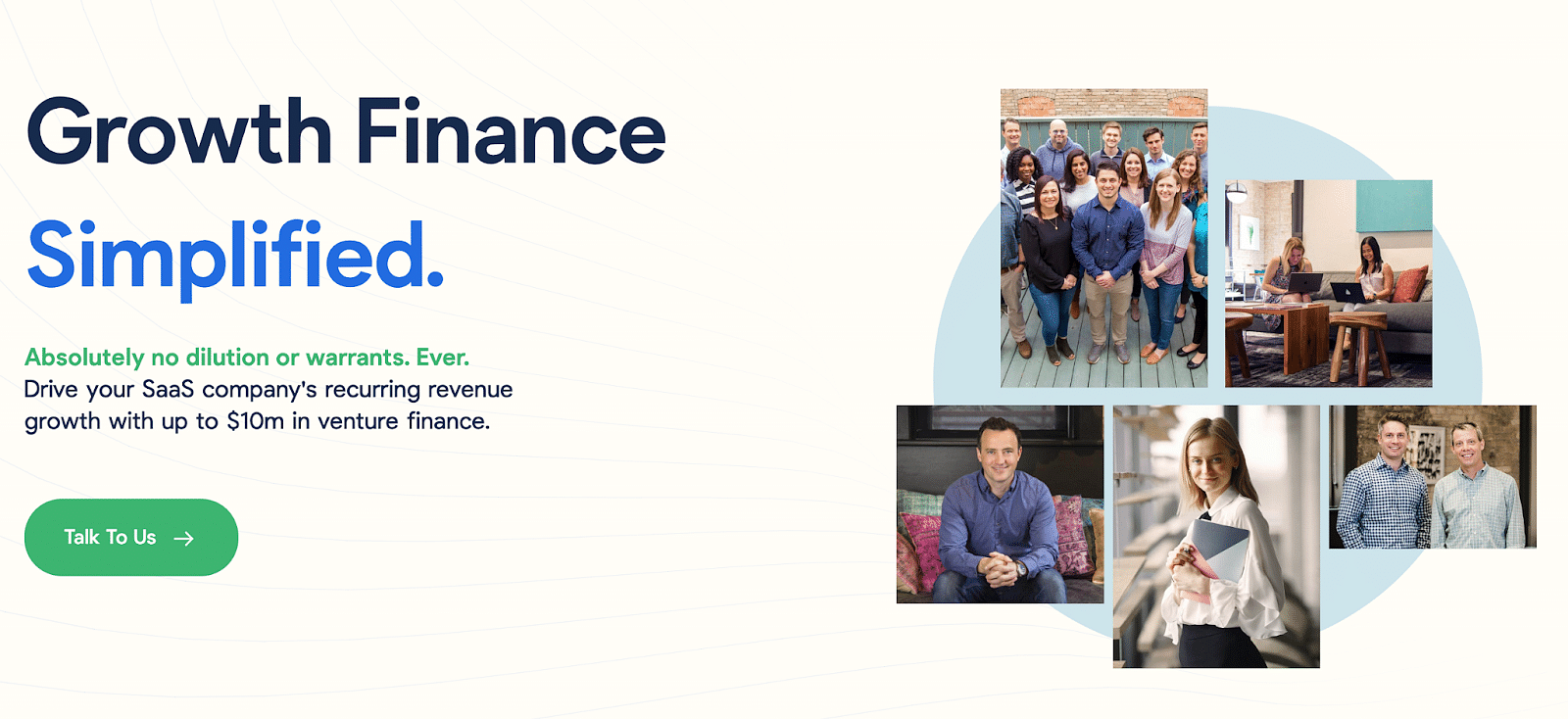
Fund your way to success with financing solutions from Element Finance
By Jim James, Founder EASTWEST PR and Host of The UnNoticed Entrepreneur.
John Gallagher is the Chief Executive Officer (CEO) of Element Finance. He was on the latest episode of The UnNoticed Entrepreneur where he talked about what a company like his looks for in a business when investing — and how entrepreneurs can get noticed by the money people.
Image from LinkedIn
Which Companies Does Element Finance Help?
Element Finance invests in companies that are past the initial startup phase. They’re already at the stage where they have customers and revenue, and they’re looking to scale. They’ve already done a lot of product work and, now, they want to win more and more customers.
John’s company is a non-bank lender primarily to Software as a Service (SaaS) companies.
It’s for founders who don’t have venture capital (VC) behind them. It’s for founders who have taken their company to a certain stage — they’ve started it, won customers, and invested some money themselves with their friends and family; to get to the next stage, they have to take on some investment.
You’ll probably hear big VCs going into hundreds of millions. However, a lot of times, founders only need access to about half to two million. The number will grow as the company grows, but it doesn’t need to be huge.
At Element Finance, they work with founders to work out how much they need for them to do what they want to do — and lend that amount to them. After a year or two, when founders need to go to the next stage, when they need another cheque, and when they’ve already proven their strategy, John and his team can get back to them again and provide more capital.
Screengrab from Element Finance
What are They Looking for in a Business?
To date, Element Finance has raised $60 million. They’ve been around for four years and have since been growing consistently. Like a lot of the companies that they work with, they’ve lived a similar story. Apart from being a source of funds, they also understand the journey of the entrepreneur.
What they look for in a company is that they should have a tried-and-tested, sticky product and customers who are staying with them. They’re also looking into how the company is growing its business. What are their channels to market? How are they going after those customers? What geography are they in, and how are they approaching those geographics? Is it a UK-based, a European company, or a global one?
Every business is different. Every different scenario leads to differences in how they approach and try to get their market and audience. And Element Finance is looking at a lot of the finances and metrics behind that.
For them, this is where you really see the results — their customer or user base; how they’re spending every pound, euro, or dollar (whether they’re spending those on digital marketing, search engine optimisation or SEO, public relations or PR, advertising, sponsorships, or conferences). They’re also after how the company tracks those spending and their return on investment (ROI). Some of those are very trackable; some aren’t. But in general, they have an effect on the business.
Their ideal client is a company that can take more money and build their business further with that, based on their metrics; a company that can pull back a little bit and try something else once they see that something’s off with what they’re tracking.
In sum, they like companies with a metric-driven approach.
When founders are running a company, they’re living and breathing the company. Most of them are tracking everything that they can track to see where they can get the wins, where they should be spending money, or where they can save money.
What Sets Them Apart from VCs?
Element Finance operates differently from VCs that are looking for big market opportunities. They, on the other hand, are in the debt world.
Image from Unsplash
When VCs invest in 20 companies, for instance, they invest from a fund. And they only need two or three big winners that are solving big problems and are going to be global businesses.
They know that a high proportion of their companies are not going to succeed. So they need to look at a product that could be solving a local need but has the potential to address a worldwide one — a product that belongs to a business that needs some help for it to explode into a global company.
Element Finance is different in the way that they’re working with founders who are solving a product need but don’t need the company to be worth $10 to $20 billion for it to be a success for them. Unlike VCs, they don’t need that much amount to get the return that covers all of their losses.
Essentially, these are companies that want to grow in stages so that there’s a high rate of success for them.
Working on Their Deal Flow
When someone is looking for finance, it’s like an enterprise sales process rather than a mass market process that they have to go through.
For their business, John and company strive to be that name that SaaS companies have at the back of their mind when looking for funding. If a company needs funds, they’d want that company to remember that they’ve seen a good post or have read an article by someone at Element Finance.
He believes that when you’re constantly at the back of your ideal customers’ minds and when they see you enough, they’d get in contact with you once they’re at the stage where they’re making a decision.
This is why a lot of their efforts go into content, conferences, PR, and advertising. They also do SEO and digital advertising so that when someone searches for “SaaS funding,” they’ll come up on the first page.
Relationships are also massively important for them. They’re getting referrals from other investors and SaaS clients that are in networks of businesses that could potentially use them.
Putting a Premium on Finance
Element Finance works with companies of different sizes that look at finance in different ways. And today, many entrepreneurs don’t view finance as the first port of call for them.
Image from Unsplash
When you’re starting your business, you don’t need a Chief Financial Officer (CFO) or finance director. That’s simply not what you need to focus on: You need to focus on products and customers. You can rely on great resources — including part-time resources and tech resources — for initially just doing your books and keeping track of your customers.
As you move along, that’s when you’ll expand your needs. Though you may not need a full-time CFO or finance director, you can gain something from having a so-called fractional CFO. These CFOs work with five or six different companies at one time and guide them through until they need a full-time resource.
At the start, founders are very product-led people. But as they develop their company and as they're moving from being a five- or six-figure business into a seven-figure one, they’d need to track the right metrics — metrics that make sense so they can arrive at informed decisions.
Not everything can be tracked. There are some personal feelings and gut feelings about what you should be doing. But for them at Element Finance, financials are highly important.
How to Secure SaaS Funding From Them?
When you’re applying for funding from them, you must have a deck explaining your business, i.e. who you are, what your product is, what it does, and how it solves the problem for customers. It should also contain some information about the type of customer that you work with, the number of your customers, and how sticky your product is.
They currently have six people in their business and are continually growing. When choosing a company from amongst the decks and pitches they received, the conversation usually starts with John and one of his associates.
Then, they will meet with the founders (John is a big believer in getting to know people by how they talk about their business). Once they’re satisfied, they’ll write what is called a “Credit Paper” to their credit committee.
It’s important to put your best foot forward to that credit committee, making sure that they’ll be able to understand everything fully.
This process can take a couple of weeks, though it really depends on how well the business is set up to raise money — how well their financials are.
Every business is different; it has ebbs and flows. And they at Element Finance want to learn more about revenues and customer bases. They’d want to know, through a phone call, why a particular quarter is slow for the business, or why a large number of customers have left.
There’s a bit of work that goes into making sure that they and the company applying for funding are fit for one another. It’s a two-way thing.
Image from Unsplash
They see companies that are going out for investment in different ways. Some of them come prepared really well.
As a general piece of advice, John shared that it’s important for any person looking for an investment to find the right investor and the right type of investment.
Whether it’s equity or debt, founders have to have the right investor because they’re going to be with them all the way. For instance, debts go on for about two to three years — not just a few months. It means that if you’re a founder, you’re going to be talking to that person for a while.
Talking about debts for SaaS companies, he also stated how short-term debts are akin to buying a car on your credit card. You can do it, but you're going to have to end up refinancing it at some stage.
Getting Noticed in the MarTech Space
In the Marketing Technology (MarTech) and SaaS space, companies can get noticed depending on a few things: Who their customers are and what their product does.
Also, are they going after Small and Mid-size Enterprise (SME)-type of companies? Or are they going after larger ones?
Based on experience, John has seen a couple of clients that have changed from an SME to a larger enterprise — and their whole sales and marketing process had to change as well. And for those companies, the onboarding of customers took a lot longer and the whole cycle was different.
If you’re that, you’ve got to be analytical in your approach when you're trying to get in front of the right people. For instance, if you want Coca-Cola to be your customer, it's going to take six months or more to try and win them as a customer. It's not going to be a couple of weeks.
If you’re interested in financing your business and in learning about how to be more analytical and metric-based, find them at www.elementfinance.com and send John or one of his associates a request. Alternatively, you can also check them out on LinkedIn or Twitter.
This article is based on a transcript from my podcast The UnNoticed Entrepreneur, you can listen here.
Cover image by micheile dot com on Unsplash






